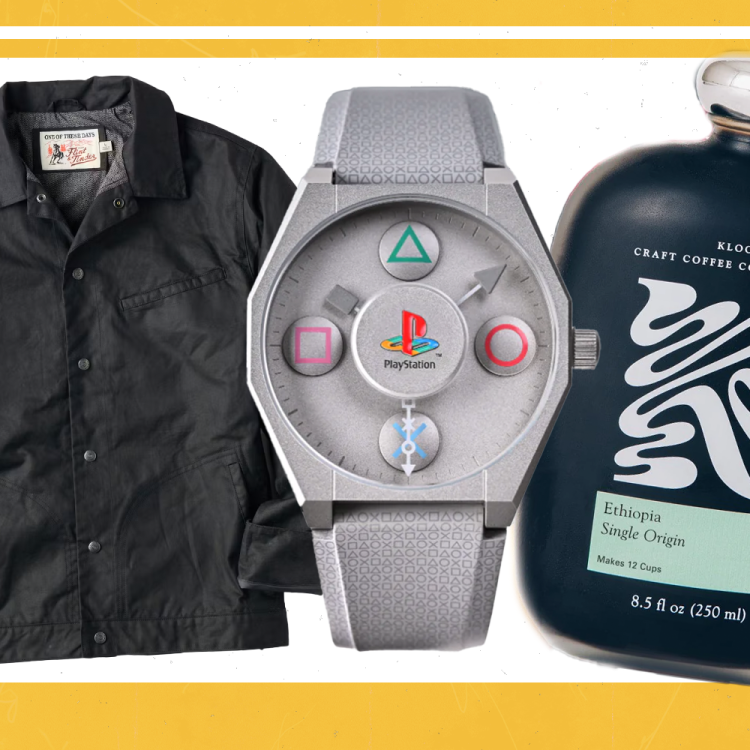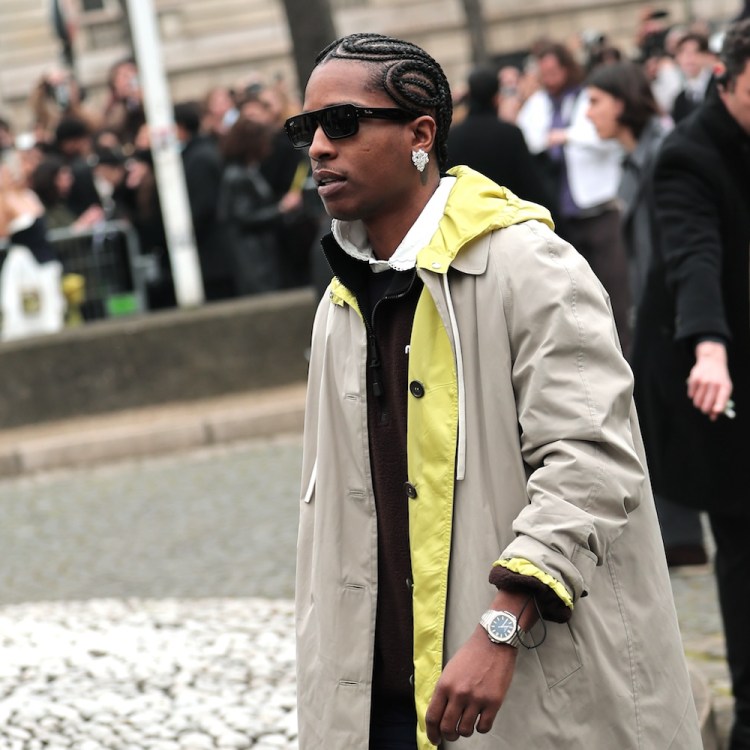Maurizio Marinella jokes that he was “born wearing a tie.” But that’s not far from the truth — certainly he was wearing one by the time he could walk. After all, he was representing the family firm by then. Now somewhat older, he’s the top man at E.Marinella, the company established by his grandfather in Eugenio, Naples and — ask almost anyone in the menswear business — makers of the best ties in the world, bar none.
That helps explains why Fiat industrialist Gianni Agnelli wore E.Marinella, as did royal mannequin about town the Duke of Windsor and now the UK’s newly-crowned King Charles. Presidents seems particularly fond of its ties too: Kennedy, Chirac, Gorbachev, Clinton, Sarkozy, all wore E.Marinella. The behind-the-scenes state gift of choice? An E.Marinella tie. Fellow Marinellistas give each other the nod.
The Best New Watches Released Last Month
From mil-spec tool watches to classically-inspired Japanese dress pieces, these are our favorite timepieces of the month.“Wearing one of out ties has become a bit like being in a club,” says Maurizio Marinella, who’s steering the company towards its 110th birthday next year. “If you see another man in one of our ties — even just while you’re watching TV — you recognize it. It’s the color, the drape, the finishing. Just the fact that these kinds of men wear our ties is good credibility for the company — you may not like your prime minister, but if he chooses your ties that is some testament. I think [these politicians] sit around talking to each other about their ties at those summits.”
If the idea that something as humble as the necktie can provide such excitement, ponder perhaps that E.Marinella makes its best ties bespoke. It likely never occurred to you that a tie needs to fit well but each is made precisely for the individual according to their neck, chest and torso measurements, as well as with consideration of their preferred knot. After all, a Windsor takes up far more fabric than a four-in-hand. “It’s all about how the tie sits on the customer’s body – and that’s what makes choosing one of our ties not an afterthought but more of an experience in itself,” argues Maurizio Marinella.
You can add to this that E.Marinella ties use silks that are all hand-printed in extremely limited runs of around six units; and that they’re available in six weights, according to whether you like your tie unlined and more relaxed — ideal for a smaller knot, or to wear with a linen suit maybe — or more substantial, for mid-winter, or to chair that board meeting. Each tie is also made using an increasingly rare technique that sees the fabric folded in on itself seven times to provide a characteristic density, rather than, as is the case with so many ties, using a thin silk outer and thick, almost padded liner.
There’s even the occasional touch of experimentation: one new fabric E.Marinella is working with now blends silk with a fiber derivative of orange peel to give a fabric that’s lighter than silk and holds brighter colors. Small wonder that when MoMa in New York put on an exhibition dedicated to icon items of clothing back in 2017, the tie chosen was an E.Marinella.

“People often don’t understand the level of workmanship that goes into making what can seem to be a very simple item. Each tie can take a long time to make,” Marinella suggests. “But the way it’s made is what gives the elegance in the end. You can tell a good tie from a less good one by the way it holds the knot. A good, well-shaped knot is a product of good silk, good linings and structure in making.”
Yes, but who actually wears a tie anymore? Unsurprisingly, over three generations the company has heard that the tie is dead many times before — with the advent of more more youth-oriented style in the 1960s, when power dressing went out in favor of more minimalistic style in the early 90s. And even as recent years’ sales nevertheless continue on an upward trajectory, maybe buoyed along by the company’s history and craft. Maurizio Marinella argues that the relevance of the tie to menswear waxes and wanes — and that forces the likes of the casualization of work attire, and the rise of home-working, has seen the tie sidelined.
But, he adds, what they have seen instead is a repositioning of the tie: men may not wear a tie day-to-day as they did; now they wear one when they want to dress more formally in the way work no longer provides the opportunity to do; or when they just want to make a special occasion of an evening out. The tie has, he argues, been rescued from the workplace, and reinstated as a means of self-expression.
“Go back in history and men would even wear different ties at different times of the day — from something more casual in the morning through to something dressier for the evening. People had more time to change then,” Marinella explains. “Of course now people wear the same kind of tie throughout the day, if they wear a tie at all. But ultimately ties are not even about being dressed up. They’re socially symbolic, statements of a certain kind of respect. It’s why we might still wear a tie to a wedding, or an interview, maybe to go to the theatre. And I think men still feel more comfortable in a tie if it fits the environment they’re in. That’s what I think will keep the tie part of menswear’s future.”

Not all ties have survived though, Maurizio Marinella concedes: the bow-tie, for one, has all but disappeared outside of correct evening dress and people who want to draw attention to themselves. Remarkably — given that it’s surely a sign of bad taste and/or the incompetently dressed — Marinella will even sell you a pre-knotted tie, albeit one hand-made with a clever touch of in-built asymmetry so that it looks more like a self-tied one.
The problem, Maurizio Marinella says, “is that hardly anyone knows how to tie a bow tie properly anymore, so better to have a ready-tied one that none at all. It’s not fake, just a way of making life easier for some people. You just can’t have it looking too perfect. It’s more elegant when it isn’t.”
But it’s the classic long tie that, he says, will live on — although he draws the line at providing a pre-tied one of those. You don’t need hundreds, he insists, just a few good ones: one in plain dark blue; one with blue background and a small white motif; one in regimental stripes — with dark blue as the main color; one in lighter pastel hues; and one bright, more showy tie. Stock versions of each of these — which won’t necessitate a visit to one of E.Marinella stores, in Naples of course, but also Rome, Milan, London or Tokyo — will set you back around US $1200.
You may be regarded as having something of a brass neck to splurge that much on ties alone, but your wardrobe will thank you. Once tied, you may never take them off. Maurizio rarely does. “I think I only don’t wear a tie for around 10 days a year, when I’m on a family holiday,” he laughs. “Then my dress is really too relaxed for a tie. A tie doesn’t look good with shorts. That said, my other great passion [in menswear] is sneakers. And yes, with a dark suit, get the tie right, and get the sneakers right, you can actually wear them together. And it looks good too.”
This article appeared in an InsideHook newsletter. Sign up for free to get more on travel, wellness, style, drinking, and culture.
























